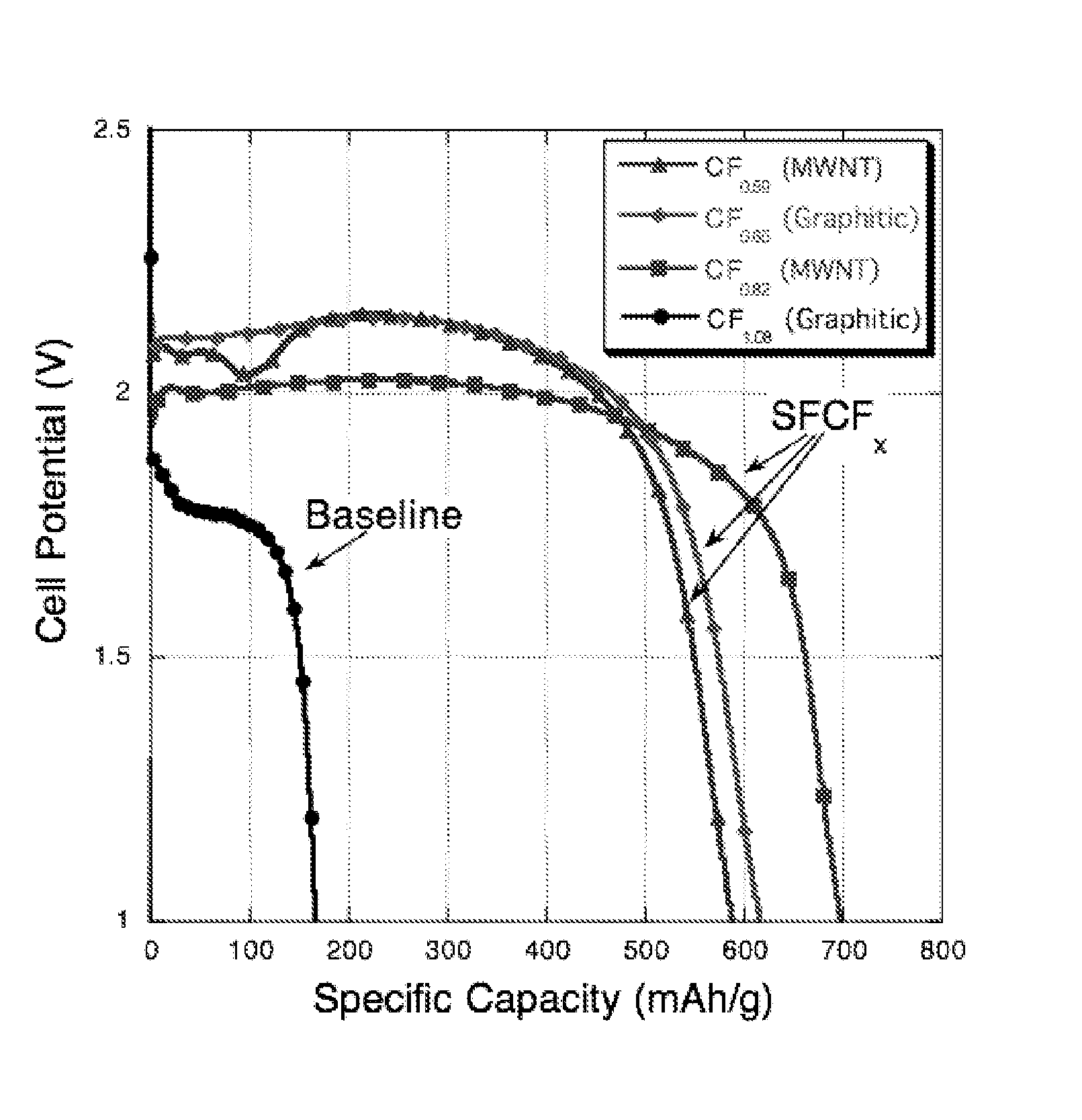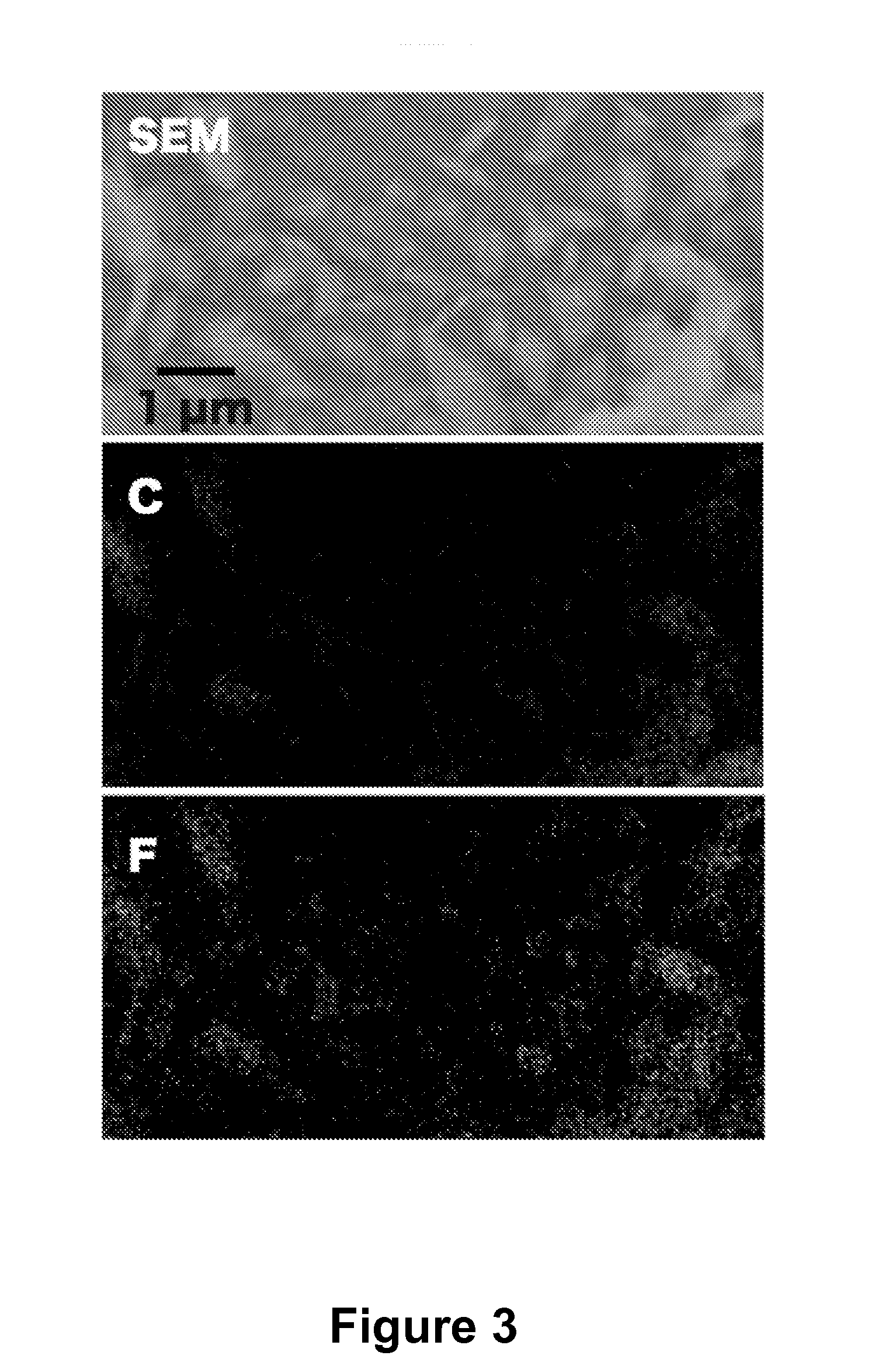Low temperature electrochemical cell
a low temperature electrochemical and cell technology, applied in the field of low temperature electrochemical cells, can solve the problems of temperature energy density values, hinder the implementation of lithium based electrochemical systems in applications requiring low temperature performance, and not clear if state-of-the-art lithium based electrochemical systems are capable of meeting stringent performance requirements, etc., to achieve good electronic performance and enhance the performance of batteries
- Summary
- Abstract
- Description
- Claims
- Application Information
AI Technical Summary
Benefits of technology
Problems solved by technology
Method used
Image
Examples
example 1
Low Operational Temperature Li—CFFx Batteries Using Cathodes Containing Sub-Fluorinated Graphitic materials
Overview
[0084] Commercial lithium / polycarbon monofluoride batteries [Li—(CF)n] are typically current-limited and are therefore not implemented in high-rate or low-temperature applications. Recent results suggest, however, that CF-based cathodes that use sub-fluorinated CFx (SFCFx) active materials in a thin electrode form factor are able to support very high currents (up to 5 C) while still providing a significant fraction of their specific capacity. In this Example, the low temperature efficacy of these materials is examined in a −40° C. environment. CF0.54 and CF0.65 powders were characterized using x-ray diffraction, scanning electron microscopy, and x-ray energy dispersive spectroscopy. These materials were then implemented in a spray-deposited electrode using a 1-mil (˜25 μm) aluminum foil current collector and PVDF as a binder. Electrochemical tests showed that these m...
example 2
Enhanced Low-Temperature Performance of Li—Cfx Batteries
Overview
[0111] This example describes the continued examination of the low-temperature performance of the Li—CFx electrochemical couple in a −40° C. or colder environment. Previously, the efficacy of sub-fluorinated CFx (SFCFx) cathode active materials was demonstrated; preliminary results indicated that the material was functional at rates up to C / 10 at −40° C., however there were often substantial voltage fluctuations during discharge, accompanied with inconsistent capacity yields and sometimes dramatic polarization events. In the research described herein, an investigation of various electrolyte and cathode compositions was conducted in an effort to optimize performance. In particular, several different electrolyte solvent formulations were examined using a salt content of either 1 M or 0.5 M LiBF4. A further modification consisted of addition of an anion-receptor to the electrolyte that was intended to be a LiF-solvating...
example 3
Low Temperature Primary Li—CFx Battery Development and Testing
CFx Cathode Materials Development
[0131] Five variations of sub-fluorinated CFx cathode materials were examined and compared to commercially available CF1 in the present Example. The main focus of these studies was to improve low temperature functionality of this class of materials by matching the sub-fluorinated cathode with the proper electrolyte blend. Test cells based on commercially-supplied CF1.08 powders were tested in parallel in identical test fixtures.
[0132] In the Example, the generation I and II materials consisted of partially fluorinated graphite, where x=0.53, and 0.65 respectively. The generation III material was partially fluorinated carbon nano-tube material (precursor supplied by MER corporation), where x was equal to 0.59, 0.76 and 0.82. In qualifying these different cathodes, a standard test vehicle was adopted that consisted of a spray—deposited cathode layer containing 10% PVDF binder, 10% carbon...
PUM
 Login to View More
Login to View More Abstract
Description
Claims
Application Information
 Login to View More
Login to View More - R&D
- Intellectual Property
- Life Sciences
- Materials
- Tech Scout
- Unparalleled Data Quality
- Higher Quality Content
- 60% Fewer Hallucinations
Browse by: Latest US Patents, China's latest patents, Technical Efficacy Thesaurus, Application Domain, Technology Topic, Popular Technical Reports.
© 2025 PatSnap. All rights reserved.Legal|Privacy policy|Modern Slavery Act Transparency Statement|Sitemap|About US| Contact US: help@patsnap.com



